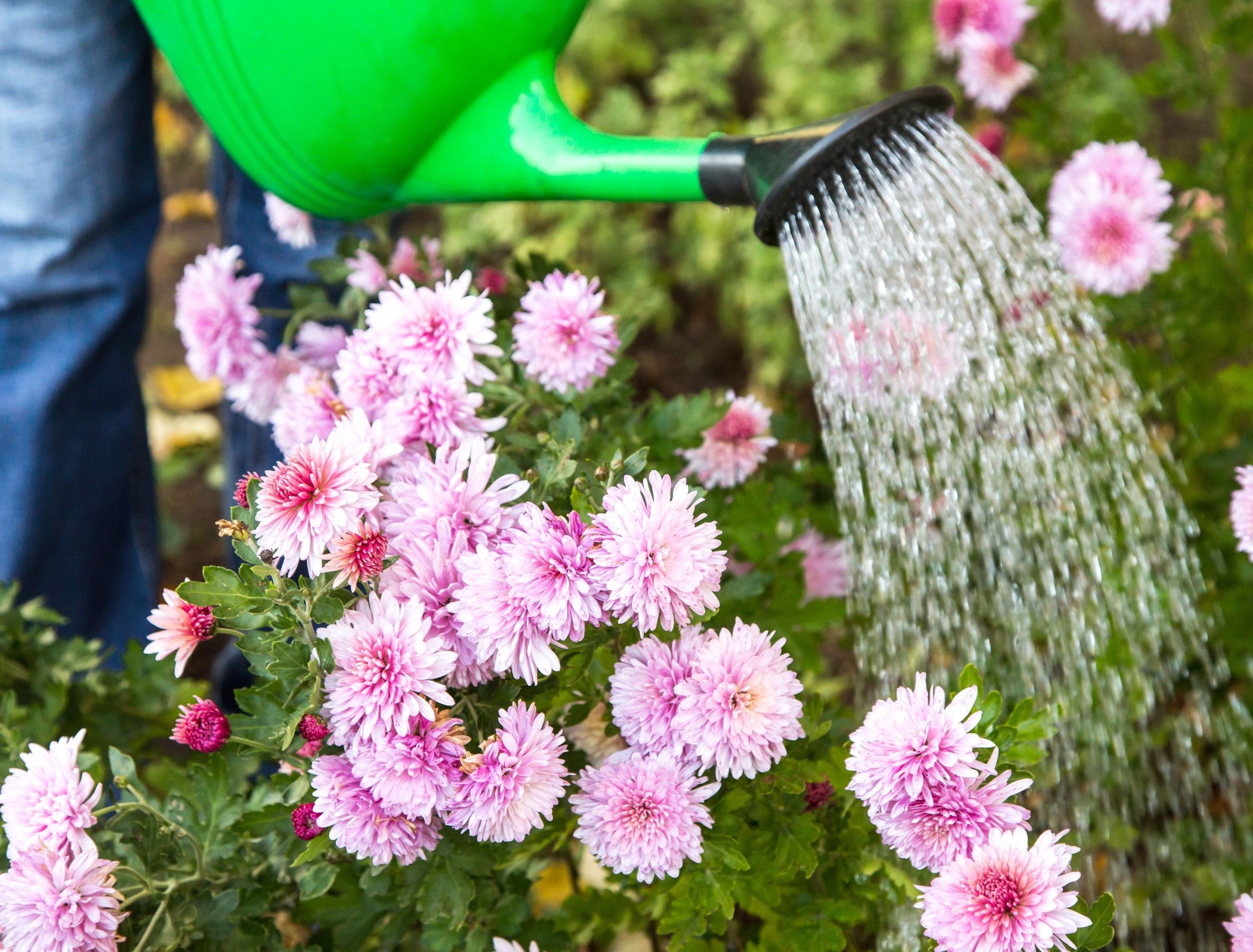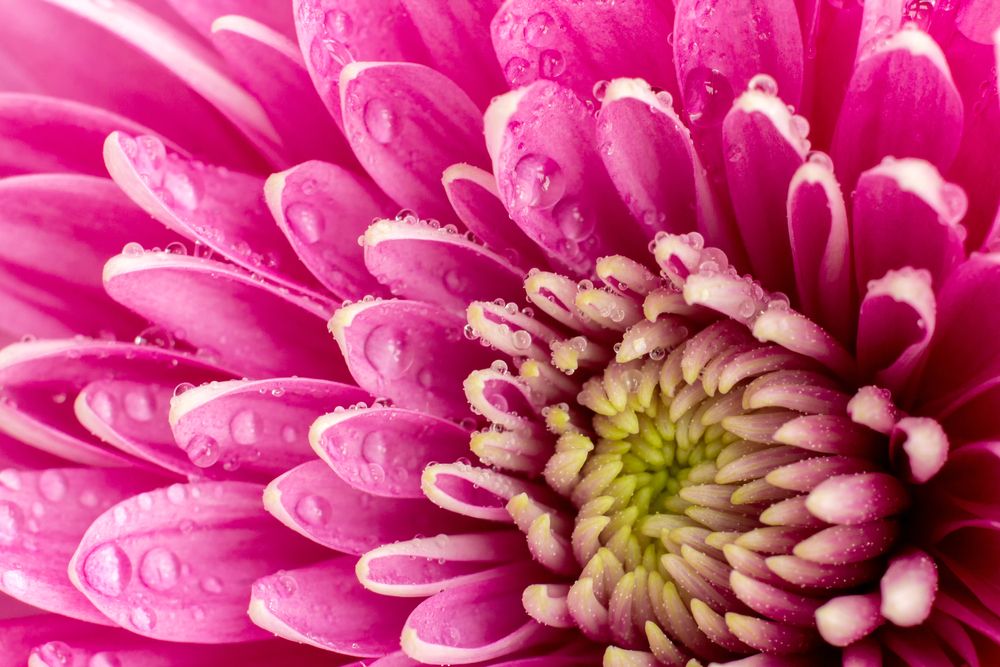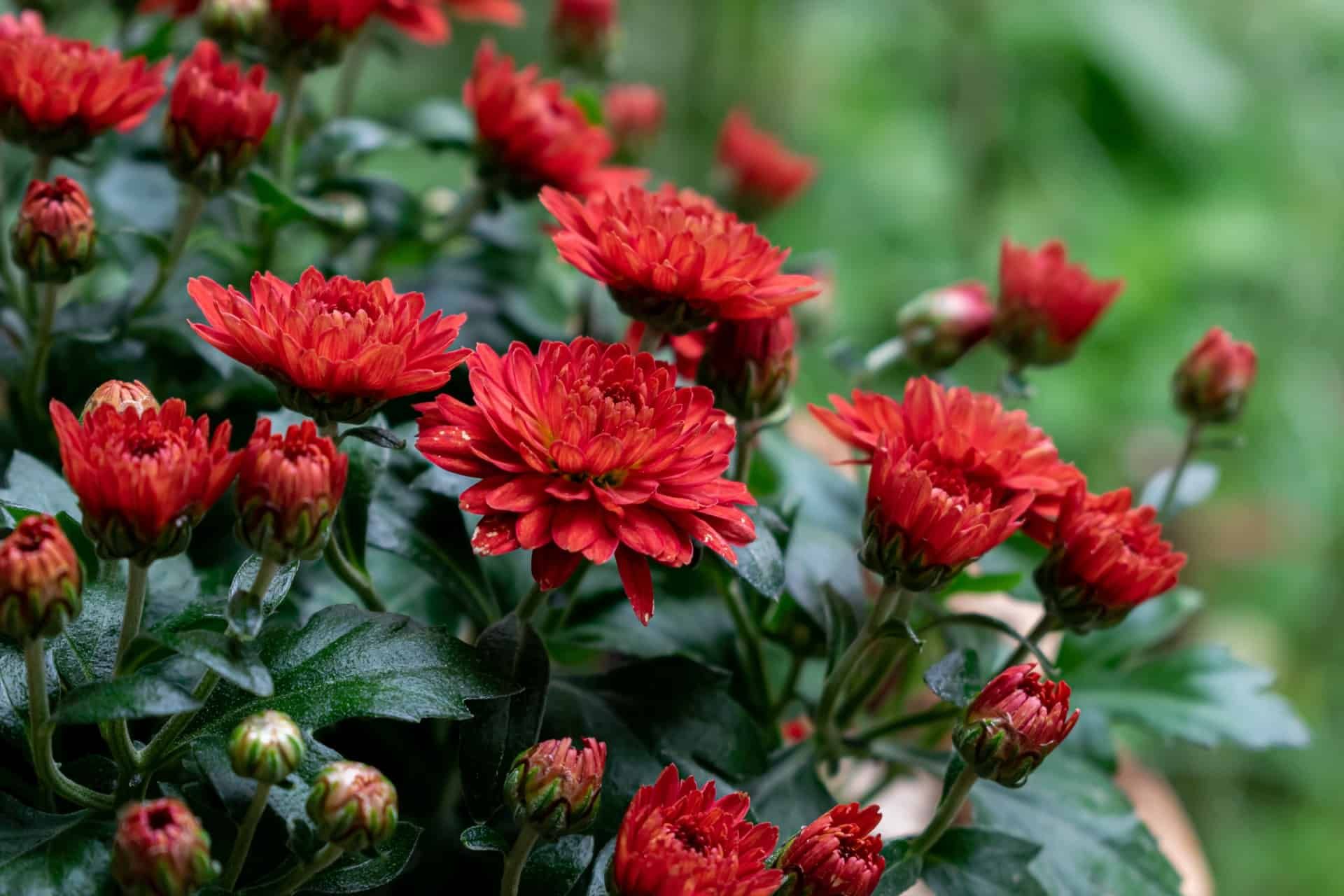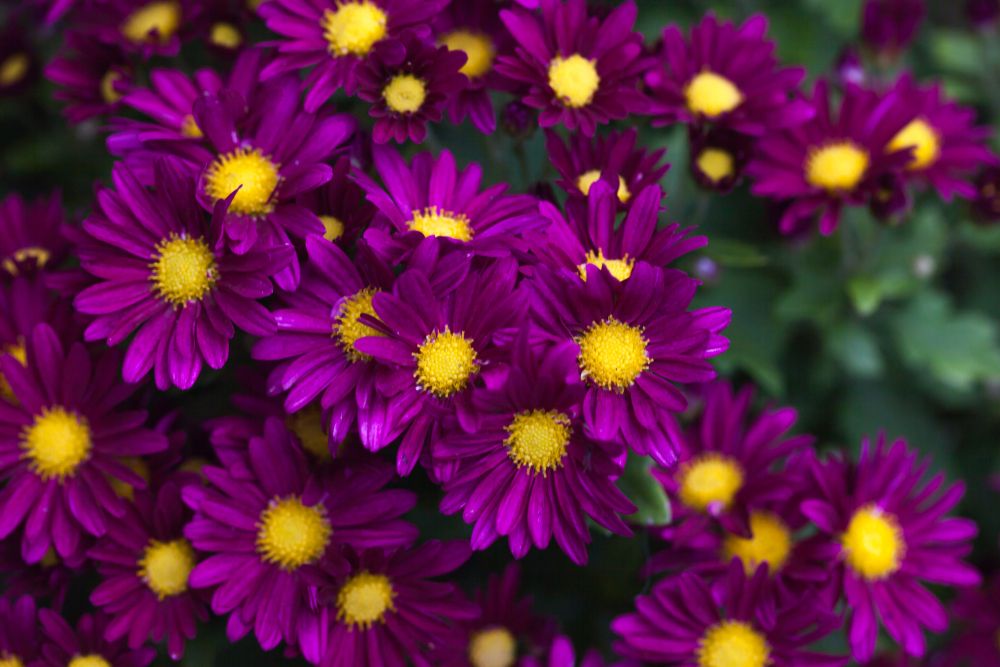Mums, also known as chrysanthemums, are one of the most popular flowers during the fall season. They are often used in decorations and as gifts. Mums come in many colors and sizes, but they all have one thing in common, you need to water them regularly.
But how often should you do it? That depends on a few factors you will discover below. Plus, you will find some tips on how to keep them healthy and let them thrive for years to come.
How Often to Water Your Mums
Image credits: Viktor Sergeevich via Shutterstock
The answer to this question depends on a few indicators, including the season, the temperature, and whether your chrysanthemums are already established.
In general, mums prefer a slightly moist environment. When watering them, do it about one inch per week early in the season. As the plants get bigger and temperatures start to rise, you should increase your watering schedule. Start watering three times a week by September and October.
How to Best Water Your Mums
Image credits: Chitaika via Shutterstock
Watering your chrysanthemums doesn't have to be a difficult task. In fact, with a little bit of care and attention, it can be quite easy to keep them healthy and hydrated. Here are a few tips on how to best water your mums:
Morning Watering
As with most plants, water your mums in the morning. It will allow them to absorb the water before the heat of the day sets in.
No Overhead Watering
Water at the base of the plant, not overheard and onto the leaves. The roots are where the plant takes in most of its nutrients and moisture. Watering the leaves of the plant can cause fungal diseases like powdery mildew.
Water Deeply
When it comes to watering your chrysanthemums, watering deeply is best. But you don't want standing water to form-- It can lead to root rot. So, provide enough water to reach the roots and let the soil drain well. If there is a plate underneath your pot, remember to empty them out after an hour.
Keep the Soil Moist
To ensure your mums thrive, plant them in rich, well-draining soil. Keep the soil moist but not soggy, as excess moisture can lead to rot. Pay close attention to your soil during and after planting to be certain the moisture levels remain ideal.
Mulch
Mulching your mum is a great way to conserve soil moisture and keep weeds out. Just spread the mulch around evenly, so your mum can enjoy all the benefits!
General Care Tips for Mums
Image credits: Hajnal Oltyan via Unsplash
When taking care of chrysanthemums, a few general tips will help keep your flowers healthy and beautiful.
First, plant your chrysanthemums in an area that gets plenty of sunlight. These flowers need at least six hours of direct sunlight each day to thrive, so choose a spot away from obstructions like walls or trees. Secondly, water your chrysanthemums regularly. These plants prefer moist soil, so check it frequently and water as needed.
Lastly, mums are heavy feeders. The best times to fertilize chrysanthemums are right as new growth springs up and again around the start of August and during the spring. Pick a slow-release fertilizer for the best results. A balanced fertilizer will help your mums grow strong and healthy, so they can put on a beautiful display all autumn long.
Container Mums
Image credits: New Africa via Shutterstock
Chrysanthemums add a splash of color to your garden and make everything look more cheerful. But what if you don't have a lot of outdoor space? Or what if the weather isn't cooperating?
Don't worry! You can still enjoy beautiful mums even if you have to keep them indoors in pots. Provide them plenty of sunlight near a sunny window, but keep an eye on the temperature. If it gets too hot, you can always open a window or move the pot away from the direct sun during the hottest part of the day.
Water them regularly during the establishment phase, and then keep an eye on the soil moisture levels. If your mums start to dry out, water them well.
Pests and Diseases to Watch Out for
Image credits: NataLogPhoto via Shutterstock
Chrysanthemums are beautiful, hardy flowers that make a great addition to any garden. However, like all plants, they're susceptible to a range of diseases and pests.
Leaf spots, rust, powdery mildew, wilt, gray mold, ray speck, and ray blight can all affect chrysanthemums. Parasitic roundworms called nematodes can infest the plants, and slugs and snails may eat the leaves.
Insects such as aphids, two-spotted spider mites, and leafminers can also cause problems for chrysanthemums.
Fortunately, there are things you can do to prevent or control these problems. For example, good hygiene practices can help prevent the spread of disease. This includes sterilizing your tools before using them. To remedy the problem you can try your hand at different insecticides, traps, or barriers to keep pests at bay.
Mum's The Word!
Now that you know how often to water your mums, it’s time to get to work! Don't forget to water them frequently when the temperatures are on the rise, and once they are established. Additionally, mulching your mums can help retain moisture! Keep an eye out for pests and diseases so you can keep them healthy and now you can enjoy their beauty for years.
Do you have any tips or tricks for watering your chrysanthemums? Leave a comment below!






